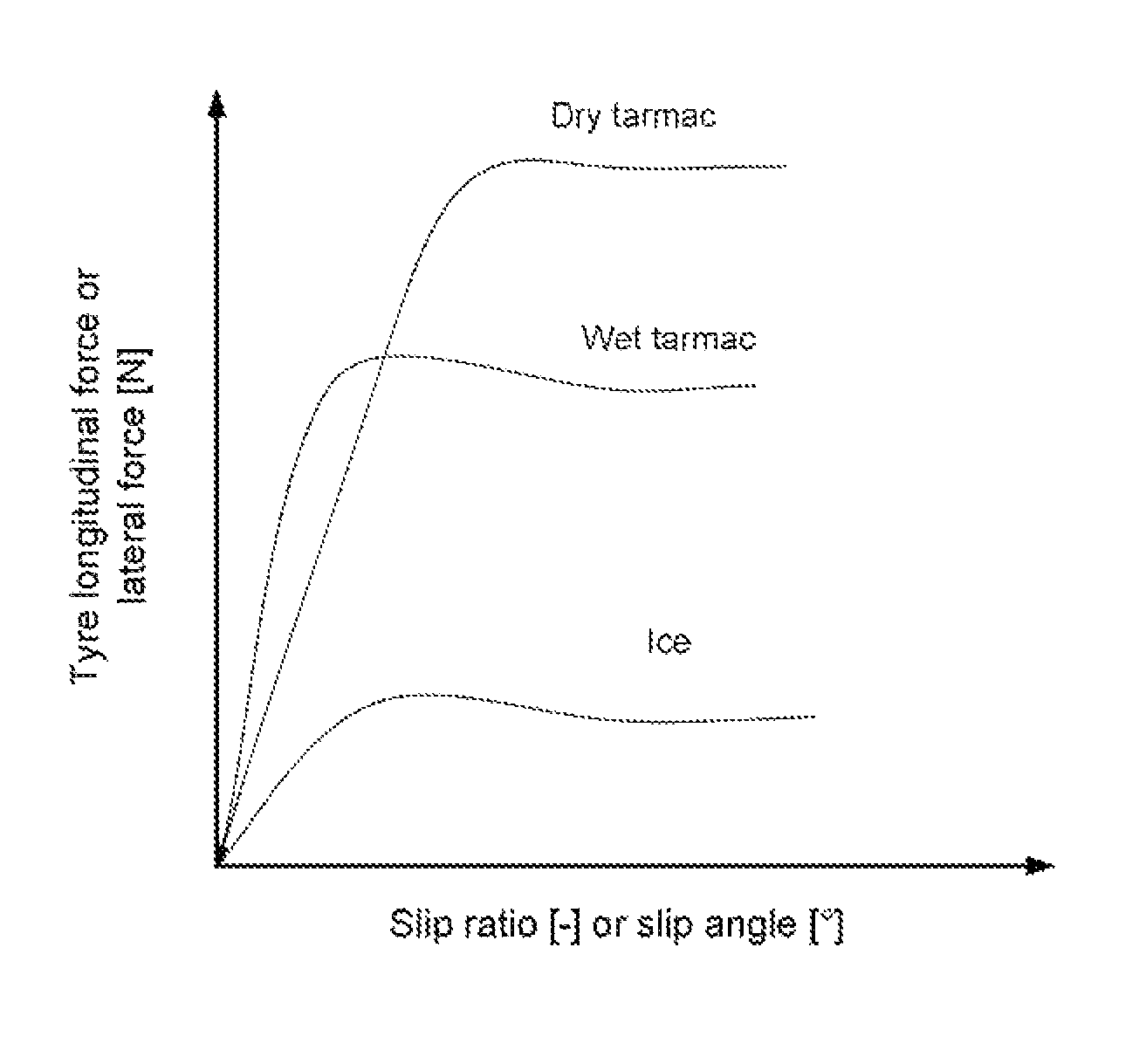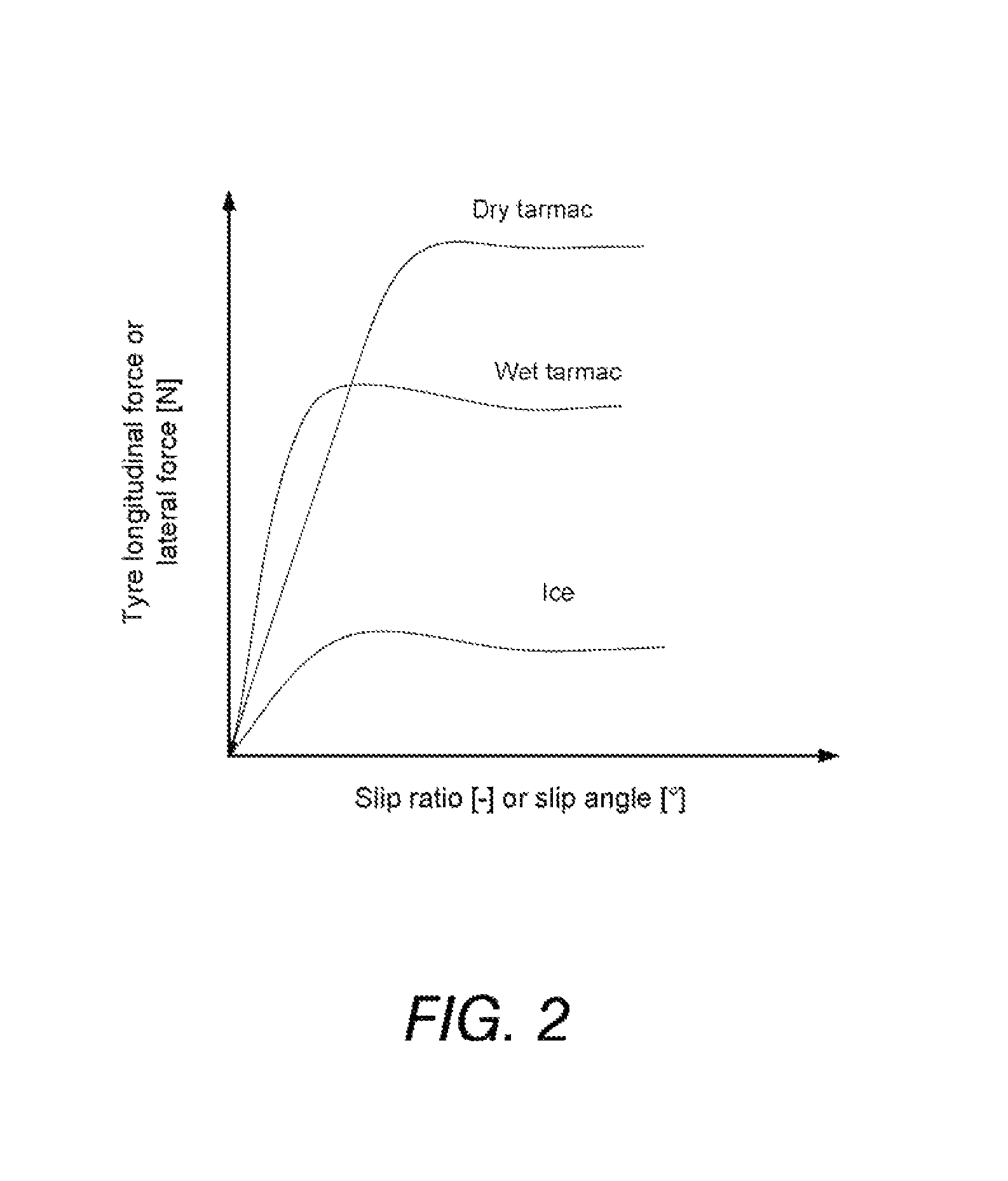Friction estimation method
a friction estimation and tire technology, applied in vehicle tyre testing, brake systems, instruments, etc., can solve the problems of unfavorable safety improvement, unnecessarily frequent warnings, etc., to improve the reliability and legitimacy of warnings delivered
- Summary
- Abstract
- Description
- Claims
- Application Information
AI Technical Summary
Benefits of technology
Problems solved by technology
Method used
Image
Examples
Embodiment Construction
[0042]In the FIG. 1, the top graph is a road sensor's classification result X, varying in the example among classes A, B, C, and D. The true measuring result, however, is a multidimensional vector, which may comprise information for example about the reflection factors of a road sensor, the polarity of a reflection, and the directions of a reflection on various wavelengths of electromagnetic radiation, about temperature, humidity, etc. In addition, the road surface can be measured also outside the tires' traveling lines in order to enable a warning to be given about an inconsistent grip of the road. The quantity X can be for example a 10-dimensional classification result of 16-bit measuring results and a vector established by their frequency analysis. In practice, X acquires a considerable number of different values, and classification can be used for finding more quickly a corresponding old measuring result and for facilitating the selection of similar friction estimates.
[0043]The ...
PUM
| Property | Measurement | Unit |
|---|---|---|
| friction coefficient | aaaaa | aaaaa |
| friction | aaaaa | aaaaa |
| road surface properties | aaaaa | aaaaa |
Abstract
Description
Claims
Application Information
 Login to View More
Login to View More - R&D
- Intellectual Property
- Life Sciences
- Materials
- Tech Scout
- Unparalleled Data Quality
- Higher Quality Content
- 60% Fewer Hallucinations
Browse by: Latest US Patents, China's latest patents, Technical Efficacy Thesaurus, Application Domain, Technology Topic, Popular Technical Reports.
© 2025 PatSnap. All rights reserved.Legal|Privacy policy|Modern Slavery Act Transparency Statement|Sitemap|About US| Contact US: help@patsnap.com



